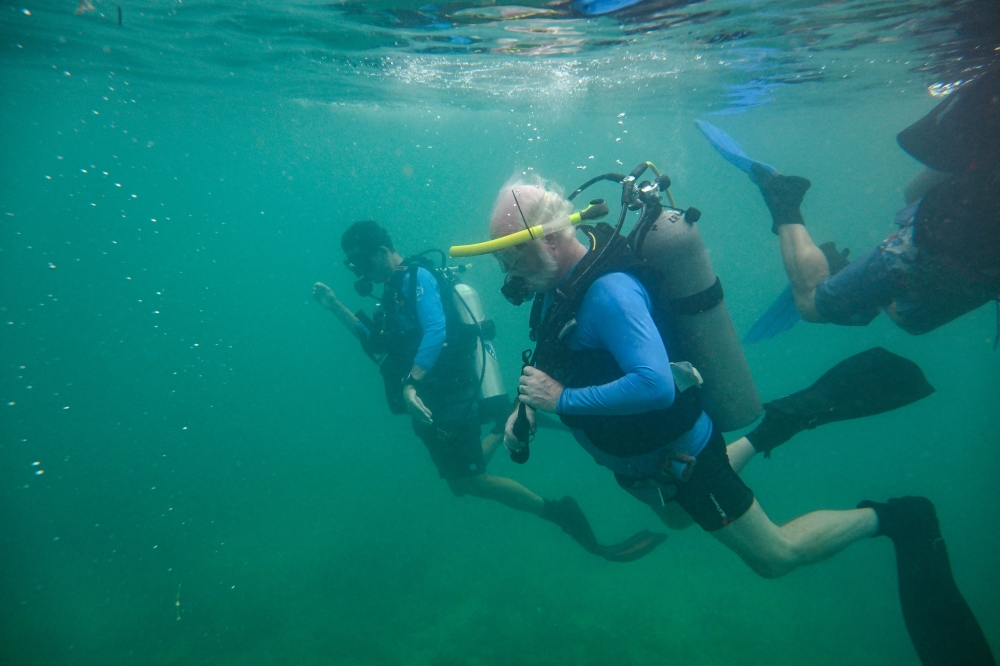In Key West, Florida, Billy Costello dons his scuba gear, fins, and prosthetic right leg before stepping off a ship and into the water.
He is a member of a team of wounded US Army veterans who are establishing coral at a reef off the southernmost point of Florida.
The goal of the mission is to both conserve coral that is in danger from disease and warming ocean temperatures, as well as to assist veterans in recovering from emotional and physical traumas.
On a recent morning in July, 31 veterans worked alongside six divers from the Mote Marine Laboratory in Key West to plant coral at the Higgs Head reef.
Since 2011, the lab has partnered with the charity Combat Wounded Veteran Challenge (CWVC) for a week each year to aid in the restoration of coral reefs, a vital environment for marine life.
As a former diver for the Army’s 3rd Special Forces Group, Costello, 41, feels at home.
He lost his right leg in an explosion that occurred in Afghanistan in 2011 as he was traveling along a road. He discovered CWVC in the months that followed and participated in its activities.
He is currently swimming to a location selected by Mote scientists, around 800 meters (half a mile) offshore, on this Florida morning.
In order to better treat head trauma and post-traumatic stress disorder, CWVC places injured veterans in demanding circumstances and collaborates with researchers who monitor and collect data about them
and other circumstances.
Costello told AFP, “I have scaled mountains with them and dove to the bottom of the sea.”
They were crucial to my recuperation and helped me understand what I would be able to do after losing my limb.
Michael Crosby, president of Mote, is pleased with the collaboration.
Every year, he added, “I make sure I’m here with these people who have given so much for the country.”
They are currently working with our laboratory to rehabilitate these coral reefs, which are like the ocean’s rain forests original coral
The veterans are given directions by a Mote lab staffer who dives ahead of them to a depth of roughly 14 feet (four meters) while holding a map.
Each square-compartmented box the scientists deposit on the ocean floor contains a piece of coral.
Using wire brushes, the divers clean the reef of detritus and algae before coating it with epoxy resin. The coral pieces are then gently taken and adhered.
The veterans and institute personnel plant 1,040 stony corals from six distinct kinds in little more than an hour.
The specimens were raised in a lab and chosen because, according to researchers, they have demonstrated increased tolerance to risks like rising water temperatures, ocean acidification, and disease after taking part in the dive, Crosby.
Coral microfragments of the same genotype are placed in a restricted area as part of the repopulation strategy for the reef. As they develop, their tissues combine to form a colony that may multiply 40 times more quickly than typical coral.
“In two, three years, we will have created (the equivalent of) a 50-year-old coral that will then be able to spawn on its own,” said Crosby, who is optimistic that the specimens will endure for a very long time.
Costello is happy he took part in the dive when he gets back to the port.
We get to assist these men in restoring the reefs, which is such a blessing, he remarked.
He finds the dive enjoyable despite the fact that his prosthesis, which he compares to an anchor, makes it challenging for him to maneuver underwater.
He added, “It’s great for the heart and the soul.”
“Especially when you’re around a group of veterans who have overcome adversity and recovered in such a positive way,” the author says.







